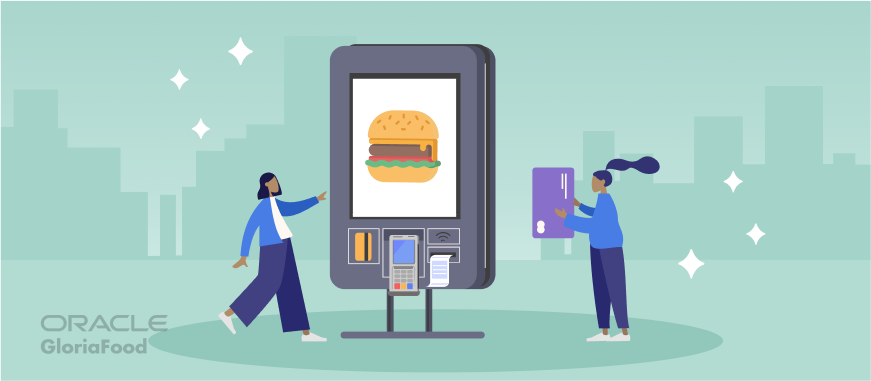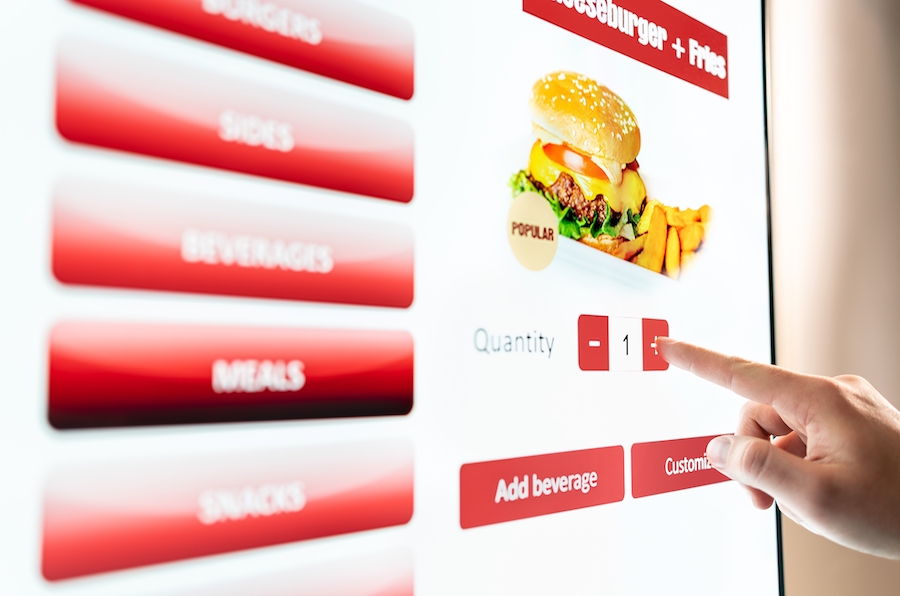- 1.6 Benefits of Self-Service Kiosks for Restaurants
- Reduced wait times
- Increased order accuracy
- Customization options
- Cost savings for restaurants
- Increased revenue
- Improved customer experience
- 2.The 5 Main Steps of Restaurant Kiosk Management
- Step 1: Choose the right kiosk software
- Step 2: Set up your kiosks
- Step 3: Train your staff
- Step 4: Monitor your kiosks
- Step 5: Analyze your data
- 3.FAQs
- Is centralized kiosk management only for large restaurants?
- Do I need a dedicated IT team to set up centralized kiosk management?
- Can I integrate my kiosk software with my existing POS system?
- 4.Conclusion
Ah, the joys of dining out. The smell of sizzling food, the sound of glasses clinking, the sight of a waiter dropping a plate of spaghetti on a customer’s lap. It’s all part of the experience, right?
Yet, the one thing that can ruin a dining experience faster than a soggy slice of pizza is waiting in long lines. Fortunately, the restaurant industry has caught up with the times and introduced a solution: self-service kiosks for restaurants.
Kiosks are those fancy machines that let customers order food without interacting with a human being. Kiosks screens are locked to serve dedicated purposes only.
While some may argue that this takes away the human element of dining out, it actually saves time, eliminates errors, and provides a better overall dining experience.
Don’t believe us? We will break it down for you in this comprehensive guide on the benefits of self-service kiosks for restaurants and how to use them.
6 Benefits of Self-Service Kiosks for Restaurants
1. Reduced wait times
Let’s face it, waiting in line sucks. Customers have to stand there, staring at the back of the person before them, trying not to drool on their shirts. Not to mention how long it sometimes takes for cashiers to punch in orders. With kiosks, you can say goodbye to all of that.
Customers can just walk up to the machine, select their order, pay, and boom, they’re done. No more waiting in long lines when they could be enjoying their food.
2. Increased order accuracy
Have you ever ordered a burger with no pickles only to receive a burger with extra pickles? It’s a common problem in the restaurant industry and frustrating for customers and restaurant owners alike. With kiosks, however, the chances of this happening are significantly reduced.
Customers can select precisely what they want, and the order is sent directly to the kitchen, eliminating the need for a human cashier to punch in the order. This means fewer mistakes, happier customers, and a more efficient kitchen.
3. Customization options
Have you ever gone to a restaurant and wished you could add extra bacon to your burger or swap out the fries for a salad? With self-service kiosks for restaurants, you can do just that.
Patrons can customize their orders to their heart’s content without worrying about confusing the cashier or holding up the line. This provides a better experience for the customer and allows restaurants to cater to individual preferences.
4. Cost savings for restaurants
Restaurants always look for ways to save money, and kiosks can help. By eliminating the need for cashiers, restaurants can reduce labor costs and increase efficiency.
You can program kiosks to upsell customers on certain items, leading to increased revenue for the restaurant. It’s a win-win situation for everyone involved.
5. Increased revenue
Kiosks can help restaurants increase their overall sales. By reducing wait times and increasing order accuracy, restaurants can serve more customers in less time, increasing revenue margins.
The customization options and upselling capabilities of kiosks can lead to customers spending more money on their orders.
6. Improved customer experience
The most important thing for any restaurant is the customer experience. Kiosks can help improve that experience in several ways.
For one, they eliminate the need for customers to stand in long lines, which can be a major source of frustration. Self-service kiosks for restaurants provide a more streamlined ordering process, leading to happier customers.
The 5 Main Steps of Restaurant Kiosk Management
As a restaurant owner, you’re probably thinking, “How can I make the most of this amazing technology?” Well, the answer is easy—centralized kiosk management.
Centralized kiosk management allows you to manage all your kiosks from a single location. You can update menus, change prices, and monitor sales in real-time. Sounds easy, right? Well, it can be, as long as you follow these simple steps.
Step 1: Choose the right kiosk software
Choosing the right software is the first step to using kiosk solutions for centralized kiosk management. There are many options out there, so do your research and choose the one that best suits the needs of your restaurant. Look for software that allows you to:
- Manage multiple kiosks from a single location
- Update menus and prices in real-time
- Track sales and inventory
- Customize the user interface
- Integrate with your existing POS/mPOS system
Step 2: Set up your kiosks
Once you have your software in place, it’s time to set up your kiosks. Ensure you place them in a visible location, with clear signage and instructions on using them.
Consider adding some branding to your kiosks to make them look more appealing to your customers. Keep the display according to the location ambiance.
Step 3: Train your staff
Your staff plays an important role in the success of your kiosks. Ensure you train them on how to use the software, so they can assist customers.
Train the staff on how to handle any non-complex issues that may arise, such as an unresponsive touchscreen.
Step 4: Monitor your kiosks
Once your kiosks are up and running, monitoring them regularly is important. This will allow you to identify any issues and address them quickly. Keep an eye on your sales and inventory, so you can make adjustments as needed.
Step 5: Analyze your data
Finally, it’s important to analyze the data from your kiosks. This will allow you to identify trends and make informed decisions about your menu, prices, and promotions. Use this data to identify areas where you can improve your customer experience.
FAQs
Is centralized kiosk management only for large restaurants?
No, centralized kiosk management can be used by restaurants of any size. It’s a great way to streamline operations and improve customer experience.
Do I need a dedicated IT team to set up centralized kiosk management?
No, most kiosk software providers offer support and installation services. They can also provide training and ongoing support to ensure your system runs smoothly.
Can I integrate my kiosk software with my existing POS system?
Yes, most kiosk software providers offer integrations with popular POS systems.
Conclusion
The benefits of self-service kiosks for restaurants are evident. Tech handlers at restaurants can easily manage these kiosks using solutions like mobile device management (MDM), which offers a range of kiosk-mode features.
Be it POS/mPOS or self-order menus, restaurants will continue to make the most of kiosks in times to come.
This article is a guest post.


